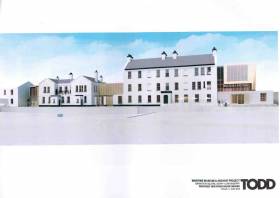Displaying items by tag: Proposed Maritime Museum
Buoyant Derry as Maritime Museum Passage Promises to Float all Boats
#MaritimeMuseum - A decision by the Department of Infrastructure (Dfi) to finally approve plans for a Maritime Museum at Ebrington will hasten the completion of a major tourist draw in the heart of Derry, according to local politicians who have hailed the move.
As The Derry Journal writes, DfI (last week) finally approved planning permission for the Maritime Museum, which is expected to open in Spring 2020. It also gave the green light for new vehicular/pedestrian access off Limavady Road via a new signalised junction.
Both applications are part of the wider ongoing regeneration at Ebrington. Local politicians said the progress was welcome and that the museum would ultimately showcase Derry's unrivalled nautical heritage and attract hundreds of thousands of tourists to the city. SDLP Foyle MLA Mark H. Durkan: “I welcome this planning decision as another piece in the Ebrington jigsaw.
On the back of other recent developments and approvals on the site, it is becoming clear that the huge potential of this key site can be realised. "Before I established a Department of Environment North-West Headquarters there a few years ago, there were no jobs and precious little activity in Ebrington.
Local businesses have now set up there and in the future, with careful planning and adequate investment, the place will be awash with activity. "The Maritime Museum itself has been talked about for a long time. It is fitting that we celebrate the rich maritime history of our City in a way that will enhance our ever –improving tourism product.’"
For more on this story, click the newspaper's report here.























